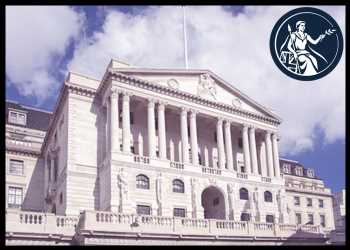Hawkish BoE Holds Rate At 15-Year High

The Bank of England left its benchmark interest rate unchanged for the second straight meeting on Thursday as economic activity in the UK is projected to be weaker than previously estimated and the labor market showed signs of loosening, and the bank vowed to keep the policy restrictive for sufficiently long to bring inflation back to the target sustainably.
The Monetary Policy Committee, led by Governor Andrew Bailey, voted by a majority of 6-3 to maintain the Bank Rate at 5.25 percent.
The UK central bank had snapped a streak of 14 consecutive rate hikes at the September meeting with a pause. The rate was lifted by a cumulative 515 basis points since December 2021 to the current level, which is the highest since early 2008.
On Wednesday, the US Federal Reserve had maintained the benchmark rate for the second consecutive meeting and kept the door open for further increases.
Fed Chair Jerome Powell said he would not rule out another interest rate hike at the next meeting in December.
The European Central Bank also paused rates in its latest policy session last week.
ECB President Christine Lagarde has signaled that rates are likely to stay higher of longer as inflation is expected to return to target only by 2025.
BoE Governor Bailey and five others preferred to keep the rate unchanged.
Those who called for a quarter-point hike were Megan Greene, Jonathan Haskel and Catherine Mann.
These three policymakers said an immediate increase in the interest rate was necessary to address the risks of more deeply embedded inflation persistence and bring inflation back to target sustainably in the medium term.
The MPC said monetary policy is likely to need to be restrictive for an extended period of time.
“Further tightening in monetary policy would be required if there were evidence of more persistent inflationary pressures,” the bank said.
Bailey said, “it is much too early to be thinking about rate cuts.”
Capital Economics’ economist Paul Dales noted that the Bank Rate will stay at the current level until late-2024 rather than until mid-2024 as investors expect.
That said, a mild recession in the meantime may mean that rates are lowered to 3.00 percent in 2025 rather than to the 4.25-4.50 percent priced into markets, the economist added.
The economy is projected to grow only 0.1 percent in the fourth quarter, which is weaker than projected previously.
GDP is expected to be broadly flat over the first half of the forecast period and to remain well below historical averages in the medium term.
The bank forecast inflation to return to the 2 percent target by the end of 2025.
Inflation is projected to fall below the target thereafter, as rising degree of economic slack was expected to reduce domestic inflationary pressures.
Source: Read Full Article
